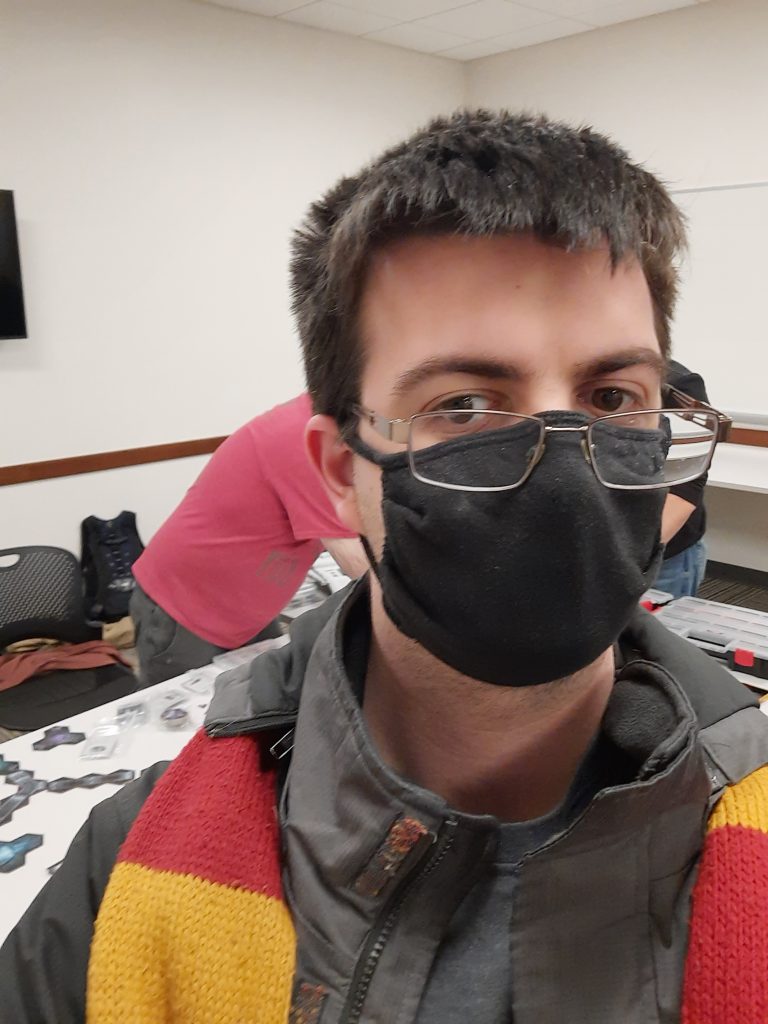Very recently, our class got together to play Two Rooms and a Boom and discuss just what it has to do with Leadership. Two Rooms and a Boom is a hidden role game where the players are split into two teams, the red team and the blue team, based upon the role card they were dealt. The players are then divided between two rooms, and must try their best to achieve their goals by trading “hostages” after each timed round. The blue team, along with whatever other role cards are dealt, has the President card, and the red team has the Bomber card. The blue team must try to ensure that the President is not in the same room as the Bomber by the end of the game, while the red team must ensure that the Bomber and President are in the same room. Alongside these basic roles are several advanced roles, that either change how you interact with the other players, grant new abilities, or even place the player on the grey team with their own, unique win condition. By sharing either your full role or just the color of your card with other players, you can begin to gather information and help your team manipulate the rooms to their advantage.
However, it was many of these new abilities and restrictions that I believe were the most difficult part of the game to deal with. For instance, several of the restrictive roles either made it very difficult to interact with other players and gather information. For instance, the Mime rendered you completely unable to speak, and the Blind requires you to keep your eyes closed so long as the card is in your possession. The Mime makes the game far more difficult as carrying on a conversation and gathering information now requires an effective means of communication without words, which not everyone may be able to perform well or understand. The Blind is likely the most restrictive, as they can no longer view other player’s cards at all and must simply make a judgment on whether they trust what they are told or not. While these certainly don’t make it impossible to gather the required information, they definitely make it far more difficult, and the Blind especially requires the other players be willing to work alongside this player and aid them as they travel between the rooms and gather their own information.
While these roles create a very large source of difficulty, I feel that they may also be the most important glimpse into an aspect of leadership. These roles, by greatly restricting the abilities of the player or forcing them to be something akin to shy, could represent different disabilities or walks of life, with the Blind likely being the most clear representation of this idea. As such, it is important to remember that while these people might have different needs and abilities, they are still very much people, and can still be the deciding factor in whether a team wins or loses. Similarly, Leaders need to remember that disadvantaged people are still people, and can provide just as much if not more to a team they are placed on as any other person. While they may need some aid in some aspects, there is no reason that they should ever be treated as lessor, and it is the job of a leader to ensure that this is the case.
Beyond all of this though, I certainly did have a lot of fun with Two Rooms and a Boom. The game can be quite chaotic, and that chaos can be quite enjoyable if its own thanks to your own social skills or even luck that allowed it to happen. Even when the game isn’t chaotic though, being able to use your social skills to both work with your team and manipulate the other team to ensure that events play out as you want them to can be quite entertaining, especially when everything falls into place. With this in mind, I would very much like to play this game again at some point, perhaps in hopes of getting different than I did during this session or just simply to have fun creating chaos with friends.




